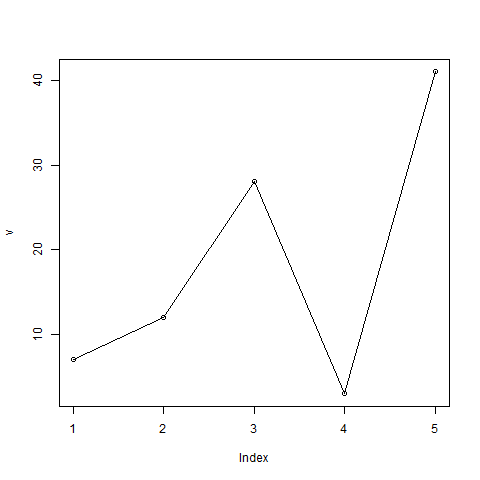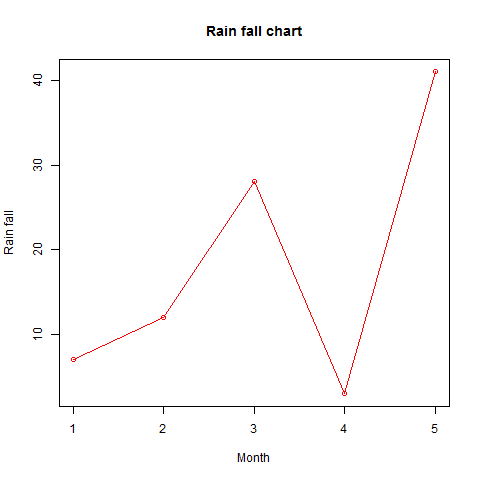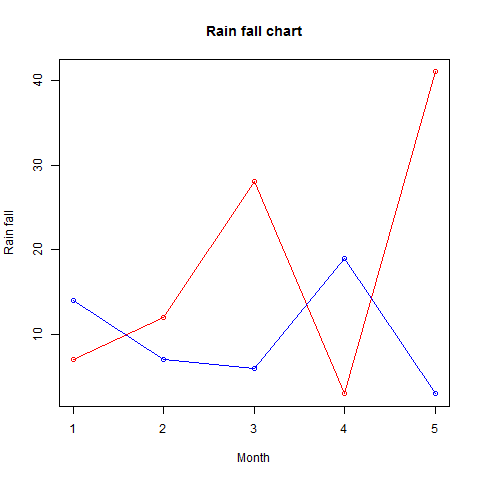R语言 折线图
折线图是通过在数据点之间绘制线段来连接一系列点的图形。这些点按照它们的坐标之一(通常是 x 坐标)的值进行排序。折线图通常用于确定数据趋势。
在 R 中,使用 plot() 函数来创建折线图。
语法
在 R 中创建折线图的基本语法为 −
plot(v,type,col,xlab,ylab)
以下是所用参数的描述:
- v 是一个包含数值的向量。
-
type 取值为”p”时只绘制点,取值为”l”时只绘制线条,取值为”o”时绘制点和线条。
-
xlab 是x轴的标签。
-
ylab 是y轴的标签。
-
main 是图表的标题。
-
col 用于给点和线条赋予颜色。
示例
使用输入向量和类型参数”O”创建一个简单的折线图。下面的脚本将在当前的R工作目录中创建并保存一张折线图。
# Create the data for the chart.
v <- c(7,12,28,3,41)
# Give the chart file a name.
png(file = "line_chart.jpg")
# Plot the bar chart.
plot(v,type = "o")
# Save the file.
dev.off()
当我们执行上面的代码时,会产生以下结果−

折线图的标题、颜色和标签
通过使用额外的参数,可以扩展折线图的功能。我们在点和线上添加颜色,为图表添加标题并在坐标轴上添加标签。
示例
# Create the data for the chart.
v <- c(7,12,28,3,41)
# Give the chart file a name.
png(file = "line_chart_label_colored.jpg")
# Plot the bar chart.
plot(v,type = "o", col = "red", xlab = "Month", ylab = "Rain fall",
main = "Rain fall chart")
# Save the file.
dev.off()
当我们执行上述代码时,它产生以下结果 –

多个折线在一个折线图中
可以使用 lines() 函数在同一个图表上绘制多个折线。
在绘制第一条折线之后,lines()函数可以使用另一个向量作为输入来绘制图表中的第二条折线。
# Create the data for the chart.
v <- c(7,12,28,3,41)
t <- c(14,7,6,19,3)
# Give the chart file a name.
png(file = "line_chart_2_lines.jpg")
# Plot the bar chart.
plot(v,type = "o",col = "red", xlab = "Month", ylab = "Rain fall",
main = "Rain fall chart")
lines(t, type = "o", col = "blue")
# Save the file.
dev.off()
当我们执行以上代码时,它产生以下结果 −

 极客教程
极客教程